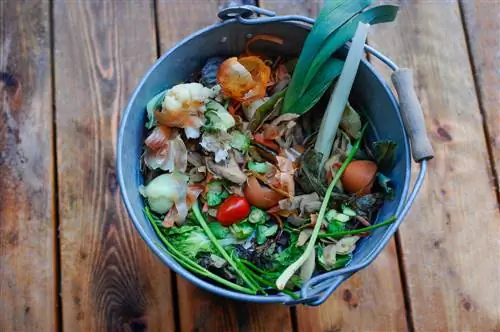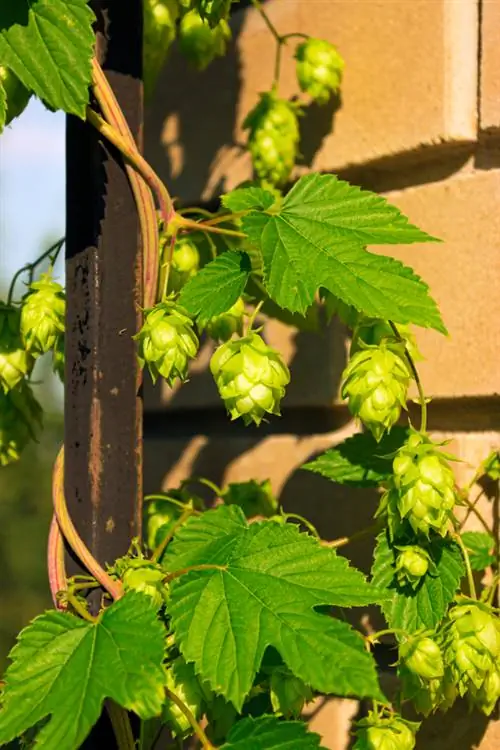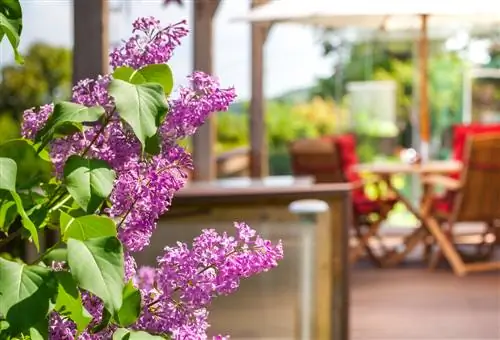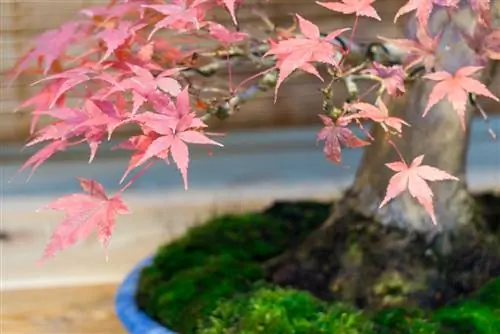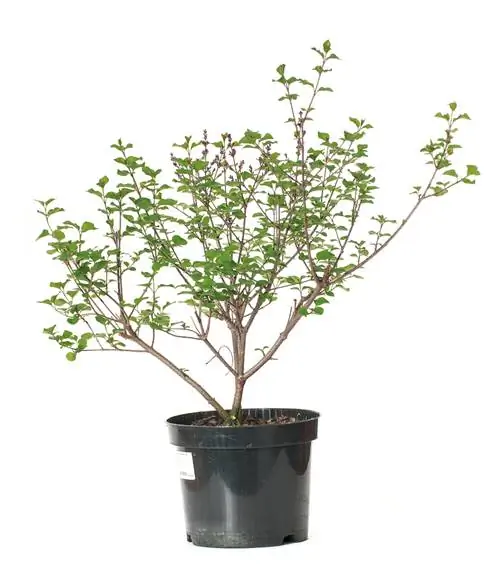- Author admin [email protected].
- Public 2023-12-16 16:46.
- Last modified 2025-06-01 06:02.
Even if you don't have a garden, you don't have to miss out on composting your kitchen waste. The solution is compost in the bucket. There are simple variants for the balcony as well as more complex methods that you can even use in the kitchen.
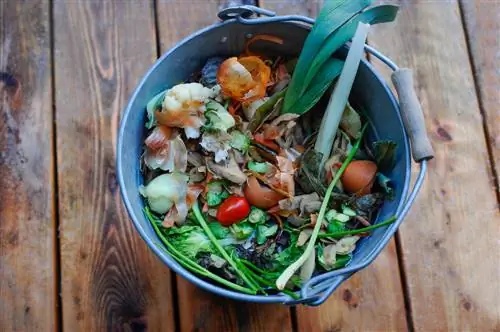
How to make compost in the bucket?
To make compost in a bucket, you need a plastic bin with a lid, wooden slats or pallet, coarse shrubbery, stone dust, compost starter and possibly earthworms. Drill holes in the bucket, place it on the pallet and fill it with layers of material. After about a year, the compost can be used as fertilizer.
Compost in the bucket - what is needed?
- Plastic bin with lid
- Wooden slats or pallet
- rough shrubbery
- Stone powder
- Compost starter
- maybe. Earthworms
Drill a few holes at the bottom of the bucket so that the compost can breathe. The bucket is placed on the wooden slats or pallet for better ventilation.
Put compost in the bucket
Put the coarse shrubbery at the bottom of the bucket. Then fill the resulting compost material from the kitchen. Cut fruit peels and vegetable scraps into small pieces so that the compost decomposes more quickly.
From time to time, sprinkle some rock dust over the compost contents.
So that the compost doesn't get too wet, you can always add some cardboard (toilet paper rolls, kitchen paper rolls, etc.) between the waste.
Elaborate but effective: Bokashi bucket
Bokashi comes from Japanese and means “fermented earth”. This version is more complex and more expensive, but can easily be done in the kitchen. The Bokashi bucket is an airtight container with a drain tap at the bottom. It is best to buy two bins so that the old compost can finish fermenting in the first one.
The bucket is filled with waste from the kitchen that has previously been cut into small pieces. Vegetable peels, raw vegetable and fruit remains, coffee grounds and the like are suitable.
The mixture is dusted with rock dust (€18.00 on Amazon) and then weighed down and covered with a plastic bag filled with sand or water. The lid is sealed airtight. The resulting liquid must be poured off regularly via the drain tap.
When is the compost in the bucket ready?
After several months, you should transfer compost to another container so that the lower layers come to the top.
Depending on the material, the compost needs about a year before you can use it as fertilizer for your plants.
Tip
When used correctly, composting in the Bokashi bucket produces neither odors nor pest infestation. The bucket method results in slight odors and occasional fly infestation. Do not place the bucket directly next to doors or windows.

